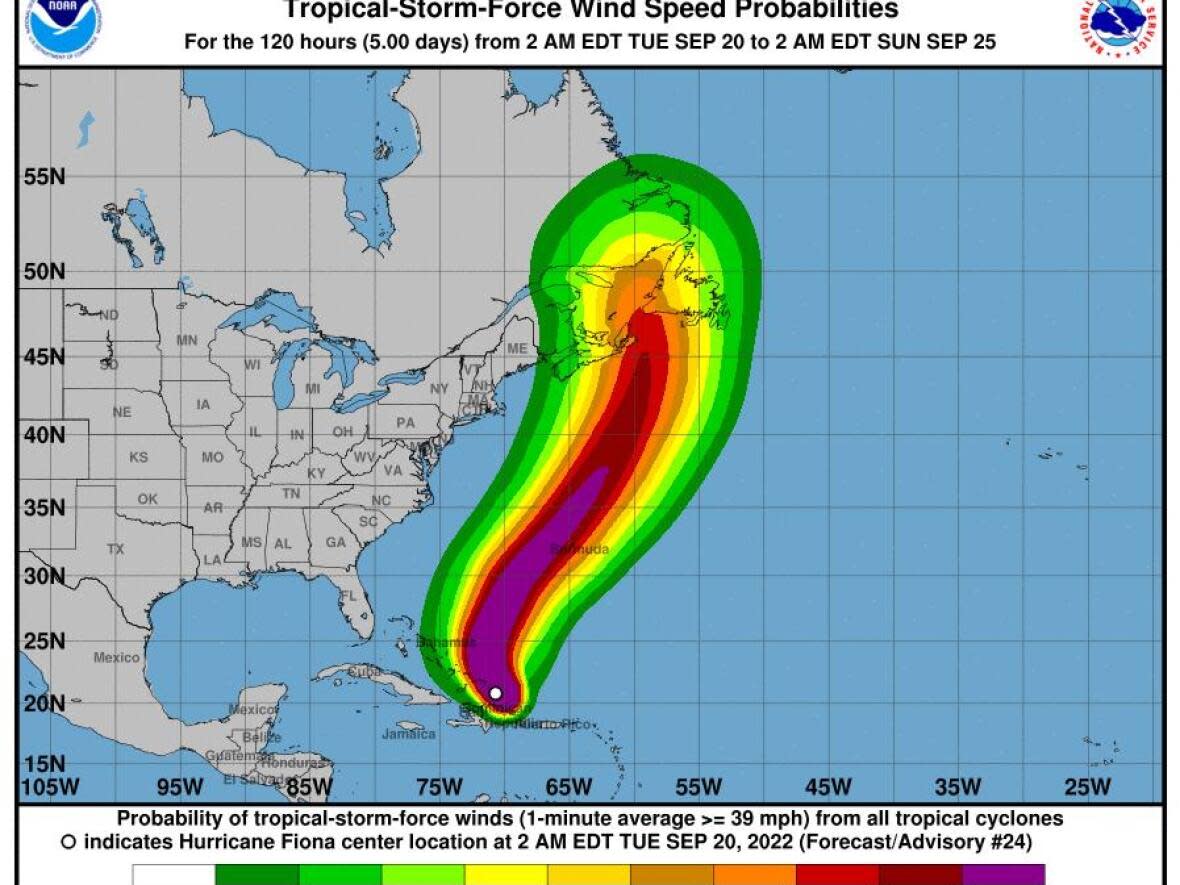Hurricane Fiona could track over western Newfoundland, Nova Scotia this weekend

Western Newfoundland and parts of Nova Scotia are in the possible path of Hurricane Fiona, which battered Puerto Rico over the weekend, causing catastrophic damage to the island and leaving people without power or water.
The hurricane also tore through the Dominican Republic on Monday, bringing torrential rain, flooding and strong winds, and killing at least two people.
CBC meteorologist Ashley Brauweiler says Fiona is the first major category hurricane of the season. As of Tuesday morning it was churning close to Turks and Caicos with sustained winds of 185 km/h and gusts up to 220 km/h.
"It's a pretty strong Category 3, and actually over the next couple of days … it's expected to become a Category 4 hurricane," Brauweiler said Tuesday.
As the hurricane swirls north toward Atlantic Canada, forecasting models have shifted Fiona's track 200 kilometres west, with parts of Newfoundland and Labrador and Nova Scotia now in the possible path of the hurricane on Friday evening through Saturday.
"Even just that overnight shift … that's a significant shift for the the Atlantic area," said Brauweiler.
Meteorologist Rodney Barney of Environment Canada's weather office in Gander agrees but with the hurricane still days away from possible landfall, he said, there is still a lot of uncertainty.
"Right now the cone is showing Fiona coming up from the south, and the cone stretches from Nova Scotia to the south coast of Newfoundland. So the track could be anywhere within that cone," he said.
While it's too early for meteorologists to predict Fiona's final track, or put numbers to wind speeds, rain amounts and storm surges, both Brauweiler and Barney said the storm will likely bring hurricane-force winds in excess of 100 km/h.
However, Brauweiler said the heaviest rain is always to the left of a hurricane's track and the strongest winds are typically to the right.
Because of the impending storm, Marine Atlantic said it anticipates cancelling ferry sailings between Port aux Basques, N.L., and North Sydney, N.S., between Friday and Sunday. The Crown corporation said it would provide updates when possible and has added two extra crossings on Wednesday and Thursday before the storm will have any effect on the region.
"The best thing to do at this point is just prepare. No need to panic," said Brauweiler.
People in the hurricane's probable track should put away patio furniture, trim tree branches, and prepare emergency kits with 72 hours' worth of essentials in case the power goes out, she added.
"Really strong wind gusts on the south coast — that, with storm surge, is not something we like to see," cautioned Brauweiler.
For now, she says, models show the southern and western parts of the island may get more wind than rain but can still expect a significant amount of downpour that could lead to road washouts.
Barney said the entire province of Newfoundland and Labrador will feel the storm's effects but western Newfoundland will see the strongest wind.
At this point, he said, he thinks the storm will pass relatively quickly.

